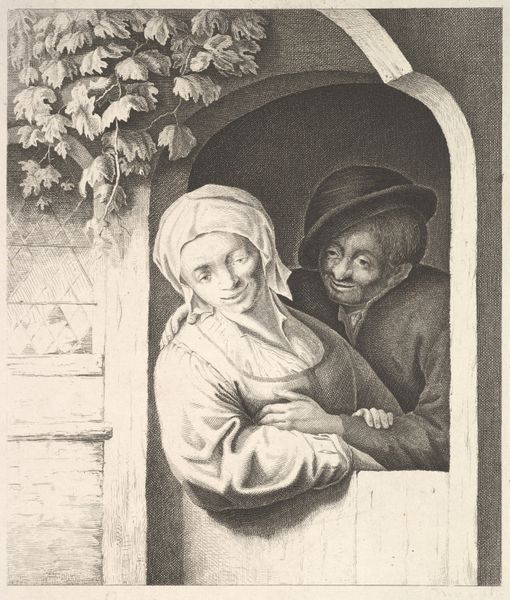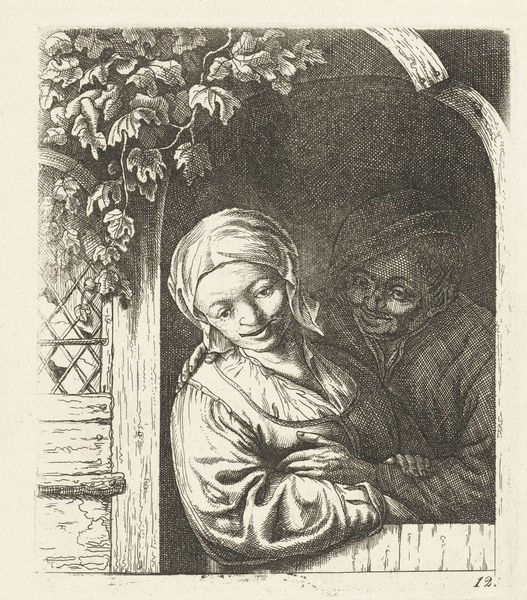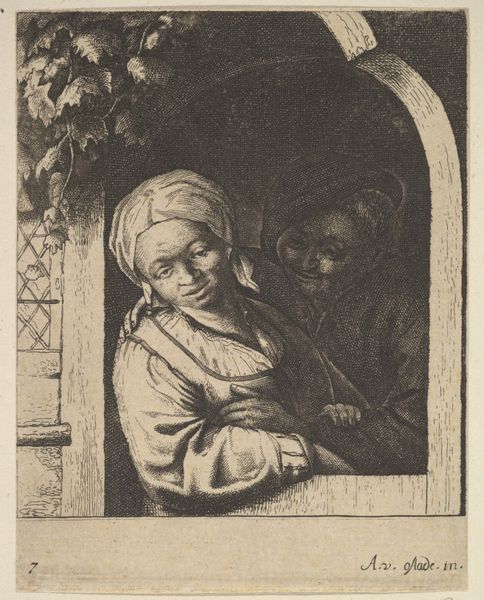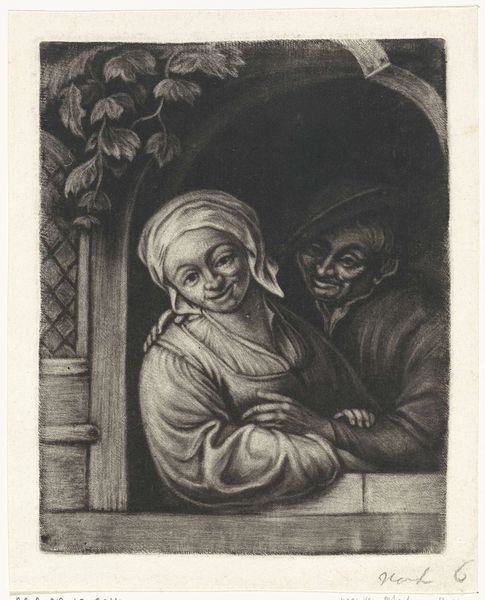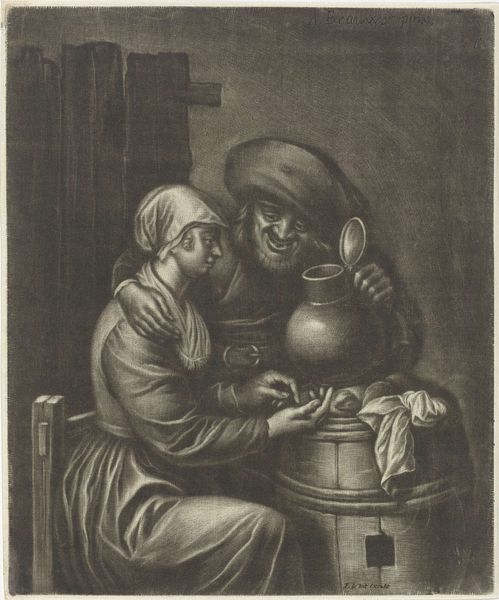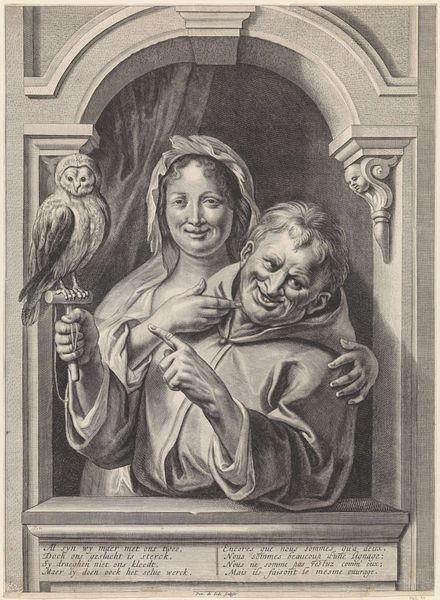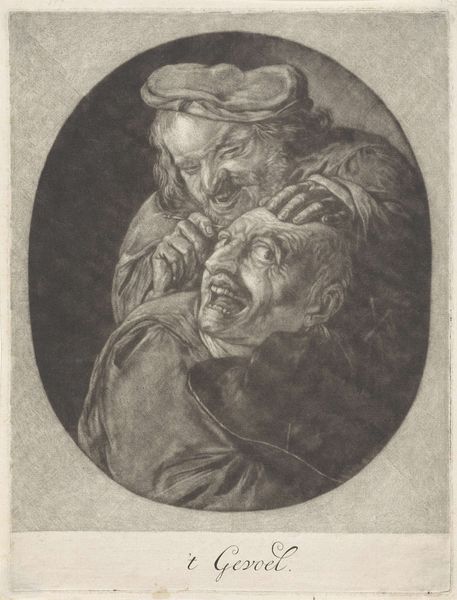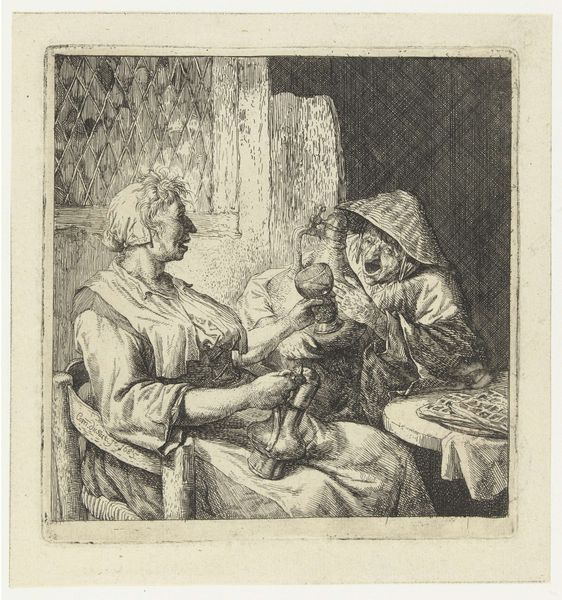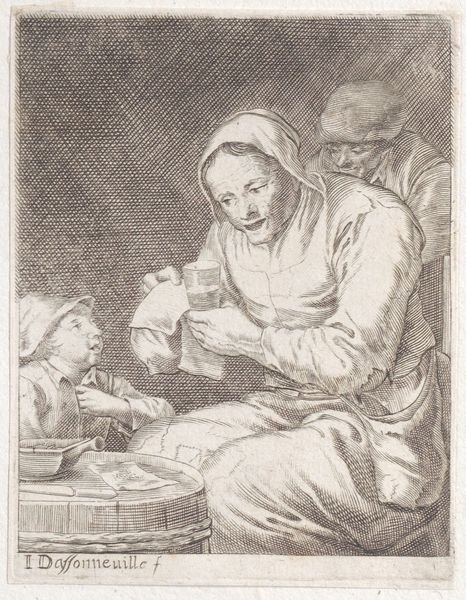
print, etching
#
portrait
#
dutch-golden-age
# print
#
etching
#
figuration
#
genre-painting
Dimensions: height 168 mm, width 128 mm
Copyright: Rijks Museum: Open Domain
Adriaen van Ostade created this etching, “Boer en boerin als liefdespaar in een deuropening”, sometime in the 17th century in the Netherlands. It depicts a farmer and his wife as a loving couple in a doorway. The image offers us a window into the cultural values and social dynamics of the Dutch Golden Age. The representation of peasants in art was a popular genre in the Netherlands at this time. It reflected a growing interest in everyday life and the common person. But it also served to reinforce social hierarchies. By depicting peasants in a particular way, artists could comment on the social structures of their time, often reinforcing stereotypes about rural life. Van Ostade often portrays his subjects with empathy. The intimacy of this image challenges any reading that would caricature the couple. To better understand the meaning of this artwork, it is important to consider its historical context. Research into the social and economic conditions of the 17th-century Dutch peasantry can provide valuable insights into the artist's intentions and the artwork's reception.
Comments
No comments
Be the first to comment and join the conversation on the ultimate creative platform.
